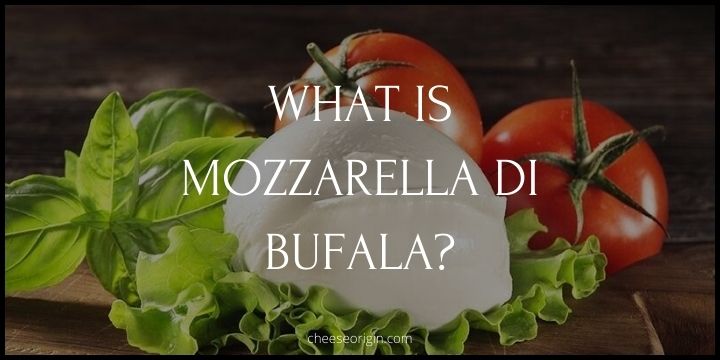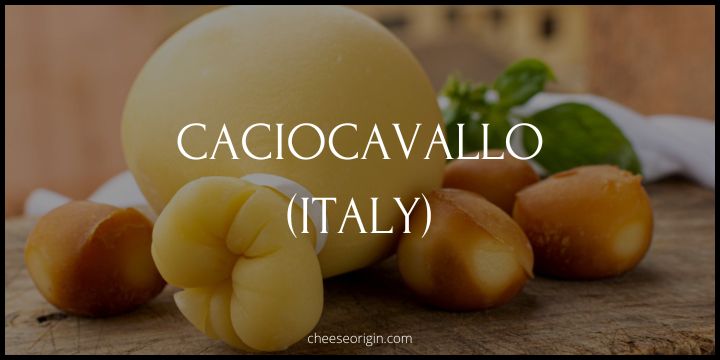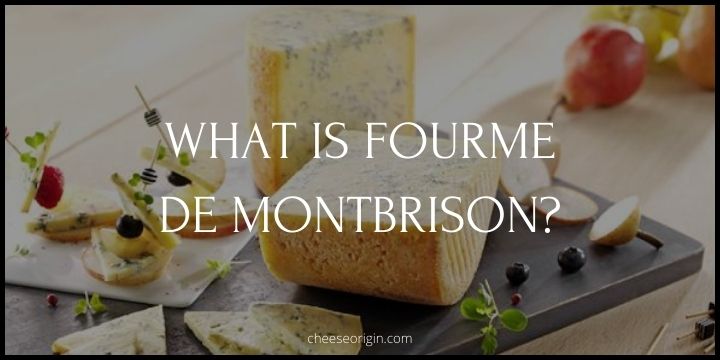What is Caboc? A Taste of Scottish Heritage

Caboc, a true taste of Scottish heritage, is a unique and delightful culinary gem. This ancient, artisanal cheese, renowned for its rich, buttery texture, dates back to the 15th century, making it one of Scotland’s oldest-known cheeses.
Rolled in toasted pinhead oatmeal, Caboc is characterized by its distinctively creamy, slightly tangy flavor with a hint of nuttiness. As you explore the world of Caboc, you’re not just savoring a delicious cheese, but also indulging in a slice of Scottish history and tradition.
Quick Facts About Caboc
| Quick Facts | Details |
|---|---|
| Country of Origin | Scotland |
| Made From | Cow’s milk |
| Texture | Soft and creamy |
| Color | White to pale yellow |
| Rind | Rolled in toasted oatmeal |
| Flavor | Mild, buttery, slightly tangy |
| Aging Time | Short-aged, typically a few days |
| Fat Content | Very high, up to 67% |
| Shape | Small log or barrel shape |
| Cooking Uses | Spreads, dips, toast topping |
| Pairings | Fruit, nuts, bread, whisky |
| Special Attribute | One of the oldest Scottish cheeses |
| Production Method | Traditionally handmade |
| Renowned For | Its rich creaminess and unique oatmeal rind |
| Serving Temperature | Best served at room temperature |
What is Caboc?

Delve into the delicious world of Caboc, a cheese that stands as a testament to Scotland’s rich dairy tradition. Originating from the lush highlands, Caboc is reputed to be one of Scotland’s oldest cheese varieties, with a history that dates back to the 15th century. This high-fat cheese, made from the milk of local cows, is a creamy delight that has been savored for generations.
Known for its unique texture and presentation, Caboc is soft, spreadable, and distinctively rolled in toasted oatmeal. The result? A cheese that not only delivers a buttery, slightly tangy flavor but also a delightful crunch. It’s a sensory experience that is both delectably rustic and unexpectedly refined.
While the cheese itself is mild in flavor, the oatmeal exterior adds a nutty undertone that beautifully complements the creaminess of the Caboc. Each bite is a journey through the rugged Scottish landscape, evoking images of rolling green pastures and cozy farmhouse kitchens.
Traditionally handmade, Caboc is more than just a cheese; it’s a piece of Scotland’s culinary heritage. Whether spread on warm toast, served alongside fresh fruit and nuts or enjoyed with a dram of whisky, Caboc is a true celebration of Scottish gastronomy. So go ahead, indulge in a slice of Caboc, and savor the rich, creamy taste of tradition.
What Does Caboc Taste Like?
Caboc, a traditional Scottish cheese, boasts a unique flavor profile that cheese lovers find irresistible. Its taste can be described as mild, creamy, and slightly tangy. The cheese’s high-fat content, which can reach up to 67%, delivers a rich buttery flavor that is perfectly balanced by a subtle tanginess.
The cheese’s exterior is rolled in toasted oatmeal, which adds an interesting texture and a gentle nutty undertone to each bite. This combination of creaminess and crunch creates a delightfully complex eating experience.
Despite its richness, Caboc is not overpoweringly heavy. Its mellow flavor makes it a versatile cheese that pairs well with a variety of foods.
Caboc Tasting Notes
- Texture: Caboc features a soft and creamy texture, making it easily spreadable.
- Color: The cheese is white to pale yellow, while the toasted oatmeal rind adds a rustic brown touch.
- Flavor: Caboc’s flavor is buttery and mildly tangy, balanced by a subtle nuttiness from the toasted oatmeal.
- Aroma: The cheese has a mild, pleasant aroma that hints at its creamy richness.
- Aftertaste: The aftertaste of Caboc is creamy and lingers with a slight sweetness.
- Serving Temperature: Best served at room temperature to fully appreciate its creamy texture and nuanced flavors.
- Visual Appeal: The contrast between the cheese and its oatmeal rind creates an appealing visual that speaks to its rustic origins.
- Mouthfeel: The combination of the creamy cheese and crunchy oatmeal rind delivers an interesting and satisfying mouthfeel.
How is Caboc Cheese Made?
- Milk Collection: Fresh cow’s milk is collected, primarily from local Scottish dairy farms.
- Heating the Milk: The milk is gently heated to a specific temperature to prepare it for the addition of the starter cultures and rennet.
- Adding Starter Cultures: Starter cultures are added to the milk. These cultures help to acidify the milk, a crucial step in cheese making.
- Adding Rennet: Rennet, an enzyme that causes milk to coagulate, is added to the mixture. This causes the milk to separate into curds (solid) and whey (liquid).
- Cutting the Curd: The curd is then cut, allowing more whey to be released.
- Draining the Whey: The curds and whey are separated. The whey is drained off, leaving behind the solid curds.
- Molding and Pressing: The curds are placed into molds and lightly pressed to remove any remaining whey and to shape the cheese.
- Maturing: The cheese is left to mature for a short period. This allows the flavors to develop.
- Rolling in Oatmeal: Once matured, the cheese is rolled in toasted oatmeal. This gives Caboc its distinctive texture and subtle nutty flavor.
- Packaging: The finished Caboc cheese is then packaged and ready for distribution.
10 Best Caboc Substitutes
| Substitute | Description | Origin |
|---|---|---|
| Boursin Cheese | A soft, creamy cheese with a garlic and herb flavor that can provide a similar texture to Caboc. | France |
| Camembert | Known for its creamy texture and earthy flavor, it can be a good alternative to Caboc. | France |
| Mascarpone | A thick, creamy Italian cheese with a mild and slightly sweet flavor. | Italy |
| Cream Cheese | While not as rich, cream cheese’s smooth texture can substitute Caboc in some recipes. | United States |
| Ricotta | A mild and creamy cheese that can be used in place of Caboc, especially in baking. | Italy |
| Neufchâtel | A soft, slightly crumbly cheese with a nutty flavor, similar to Caboc but less buttery. | France |
| Brie | Known for its creamy texture and mild flavor, Brie can be an alternative to Caboc. | France |
| Clotted Cream | While not a cheese, this thick, creamy product has a similar richness and texture to Caboc. | United Kingdom |
| Fromage Blanc | This white cheese is creamy and mild, making it a potential substitute for Caboc. | France |
| Quark | A fresh cheese with a creamy texture and mild tangy flavor, similar to Caboc. | Germany |
What Pairs Well With Caboc?

Food that goes well with Caboc:
| Category | Food that goes well with Caboc |
|---|---|
| Bread and Crackers | Whole grain bread, oatcakes, crackers, toasted baguettes |
| Fruit | Apples, pears, grapes, figs, dried fruits like apricots and dates |
| Vegetables | Celery sticks, cherry tomatoes, cucumber slices |
| Meat and Seafood | Smoked salmon, prosciutto, salami, roast beef |
| Condiments | Honey, chutney, fruit preserves, mustard |
| Nuts and Seeds | Almonds, walnuts, pumpkin seeds, sunflower seeds |
| Desserts | Dark chocolate, fruit tarts, cheesecake, fruit compote |
Also read: 11 Best Crackers that Pair Well with Cheese
Beverage that goes well with Caboc:
| Category | Beverage that goes well with Caboc |
|---|---|
| Wine | Chardonnay, Sauvignon Blanc, Pinot Noir, Merlot |
| Beer | Stout, Brown Ale, Lager, Craft Beers |
| Spirits | Single Malt Whisky, Cognac, Brandy |
| Non-alcoholic | Sparkling water, Apple Cider, Grape Juice |
| Tea | Earl Grey, Green Tea, Chamomile Tea |
| Coffee | Espresso, Latte, Cappuccino |
Also read: Best Wine and Cheese Pairings: The Ultimate Guide
Also read:
- What is Graviera? The Greek Cheese Symphony
- What is Pasta Filata? Italy’s Stretched-Curd Cheese
- What is Mastelo Cheese? Greece’s Hidden Delicacy
- Top 11 Most Popular Semi-soft Cheeses in the World
- Top 10 Most Popular Cheeses in Ireland
- What is Lanark Blue? Scotland’s Roquefort Revolution
- What is Gorgonzola Piccante? Italy’s Sharp Blue Cheese Wonder





